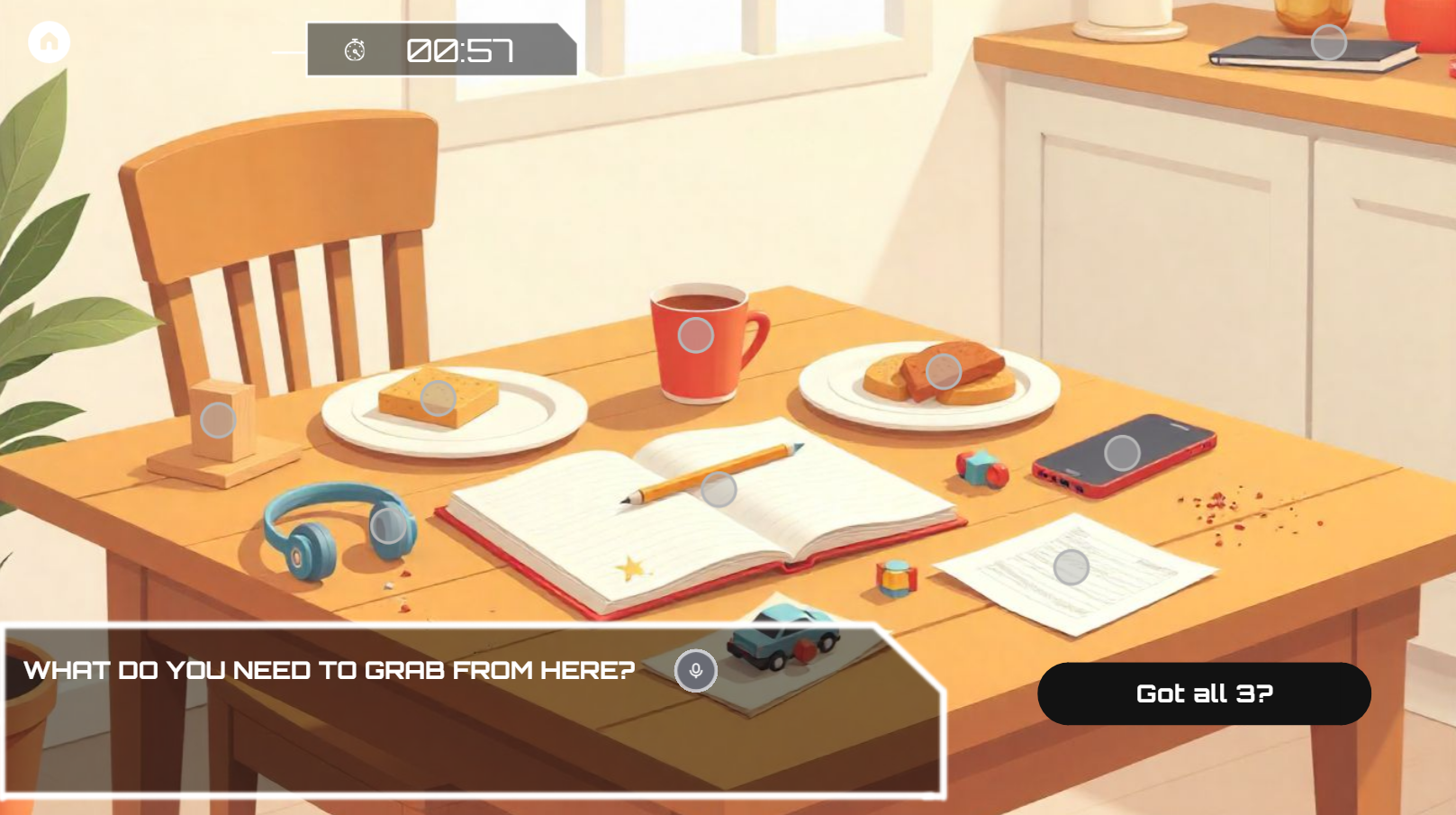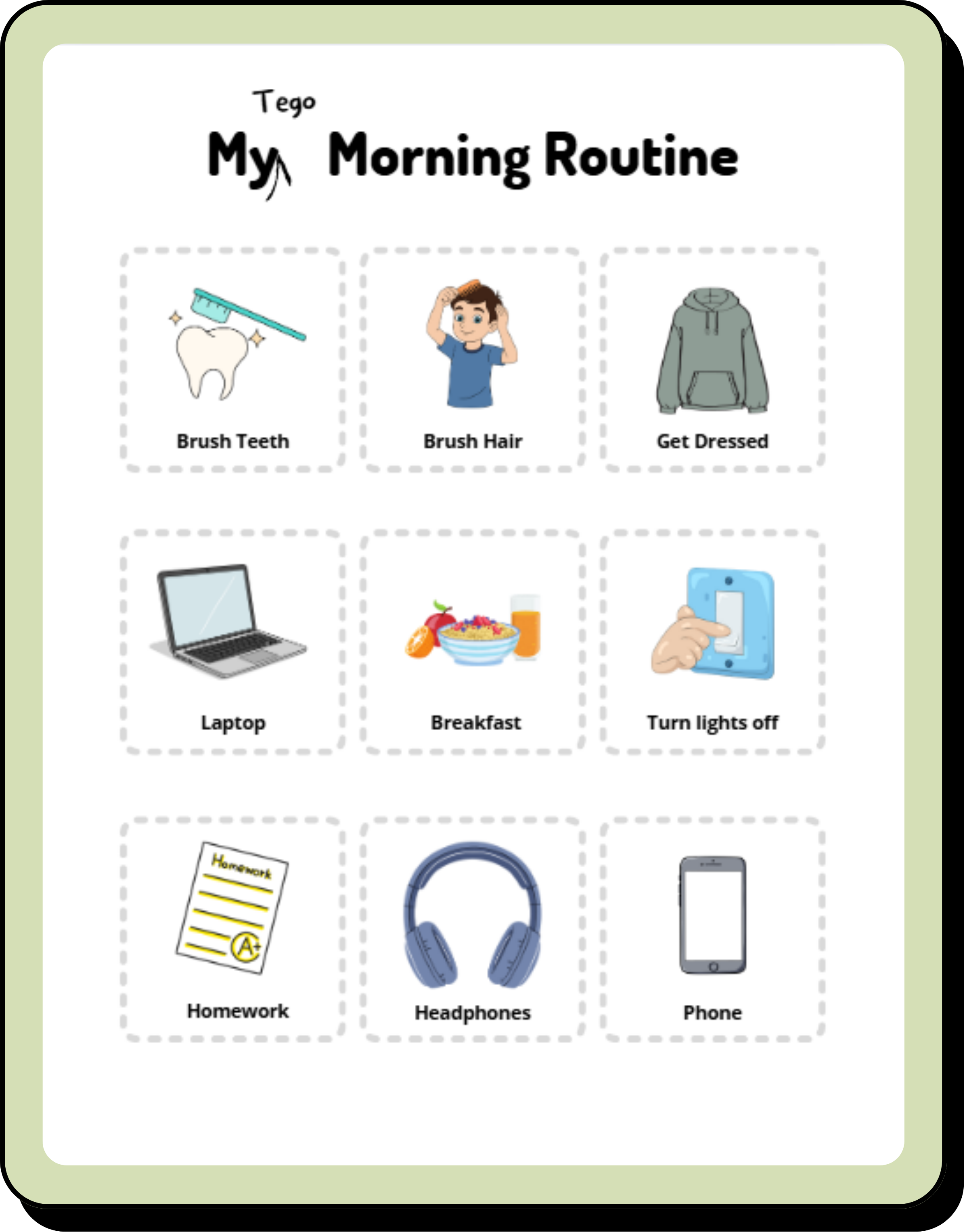Morning Mission: A Gamified Executive-Functioning Routine for Neurodiverse Learners
Morning Mission is an interactive, game-based routine built in Genially to help my 11-year-old autistic son practice executive-functioning skills and independently get ready for school. Instead of a checklist he ignored, I designed a morning “mission” map — turning routine steps into a fun, structured journey through the house with sound effects and fun visuals. This prototype explores how game mechanics and visual/audio scaffolding can support sequencing, time awareness, and smoother transitions for neurodiverse kids.
⛰️ Challenge
Traditional visual schedules and paper checklists weren’t cutting it.
My son is autistic with dyslexia and dysgraphia, and mornings are a struggle — forgetting items and avoiding or ignoring tasks when tired. Even with a printed checklist on the door, he rarely used it and didn’t want to backtrack for missed tasks. His brain needed a different way to process routines — one that felt more like the games he loves and less like “morning chores.”
I wanted to create a game that would:
Support sequencing and memory
Make the routine feel fun, not naggy
Build independence and confidence
💭 Design Approach
I used a playful, level-based structure inspired by the way kids naturally learn through games.
Key Design Principles
House as game world: each room = a level to unlock
Clear, bite-sized steps: reduces overwhelm and increases success
Visual + audio cues: supports working memory and dyslexia-friendly processing
Self-directed play: no parent prompting — he learns through interaction
Built-in feedback loops: visual progress map + “unlock next room” mechanic
Executive-Function Focus
Sequencing & working memory
Time awareness
Independence & completion habits
Transitioning between tasks without reminders
This wasn’t about perfection — it was about creating a system that works the way his brain works.
🏗️ The Build
Tools: Genially, Canva, Freepik AI, Pixabay sound effects
Interactive Components
“Morning Mission” map with house levels
Click-to-reveal and audio narration to reduce cognitive load
Decision-based breakfast choice (focus on staying full until lunch)
Sound effects and visual rewards for each completed room
End-of-routine quiz to reinforce steps and sequence memory
Watch-and-adjust iteration cycle based on live testing
Added audio where reading caused friction
Added hints and clearer interactions after observing confusion
Routine Levels
Bedroom: get dressed for weather, grab laptop, turn off lights
Bathroom: brush teeth and hair
Kitchen: choose breakfast that fuels energy
Dining Table: gather homework, headphones, phone
Exit Door: final “ready for school?” check + success screen






🌟 Results & Takeaways
Outcomes
He remembers more morning items without being reminded
Confidence boost from completing levels independently
His younger brother enjoyed it too (unexpected win)
What I Learned
Gamified tasks can reduce executive-function friction
Audio narration lowers cognitive load for dyslexic learners
Kids engage more when the task mirrors their favorite play style
Real-time observation is essential — tiny tweaks make huge impact
This approach has potential as a repeatable support tool, not just a one-off
This was a prototype, not a polished product — but even without repetition, it proved something important:
When learning tools match a child’s neurology and interests, independence becomes possible.



